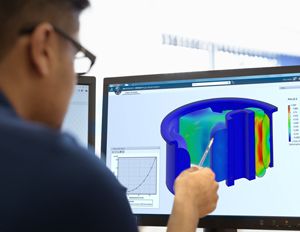
Engineering.com Research Report based on Global Survey
Prototyping and simulation enable engineers to test their designs before creating a physical product. This typically results in cost savings, safer testing and early detection of design flaws. Design testing via simulation and/or physical testing are considered best practice; however, reality and theory often conflict.
Dassault Systèmes wanted to understand the use of simulation and its place in the whole design cycle, from concept to manufacturing. In this engineering.com research report, they asked 329 engineers, designers, product managers and other readers to report on simulation and physical testing.
In this report, you will learn:
- The top barriers to simulation facing engineers today
- The top concerns with testing options
- How a company’s size impacts their simulation methods
- And much more
If you’re interested in learning more about simulation, prototyping and how these methods are applied in industry, this report is for you. We hope you find this research useful.
Complete the form on this page to download the report.
After reading this report you will better understand the use of simulation and its place in the whole design cycle, from concept to manufacturing. They found that engineers across industries are incorporating simulation at all levels. However, it’s clear that there is room to improve. There are barriers in both using simulation software as well as retaining simulation resources.
Interesting results include:
- Our survey participants employed various criteria to achieve the optimal design
- Given the ideal nature of simulations prior to production, our objective was to identify the barriers that impede engineers from conducting simulations more frequently.
- On average, engineers go through 19 iterations of the design-virtual simulation cycle before producing the first part or prototype.
- Respondents recognized that the design-simulation cycle could be better.

